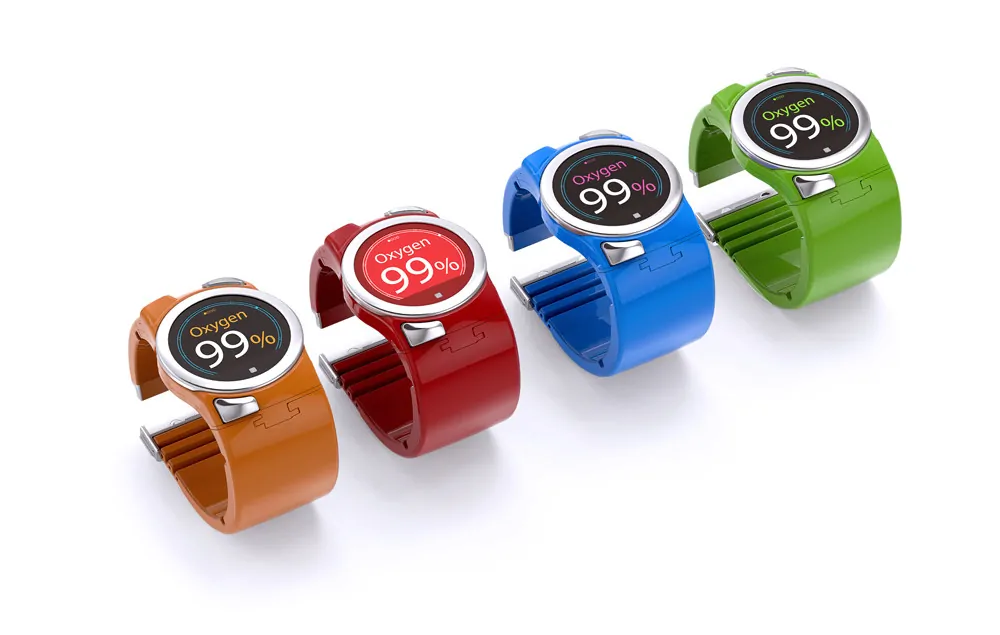Incorporating human factors in engineering is absolutely critical in the medical sector
People living longer, but living with chronic diseases, is resulting in over-crowding in hospitals and bankruptcy of the NHS, which is already teetering on the brink.
While Michael Phillips’, design development director at Renfrew Group, assessment of the challenge facing the healthcare sector may sound a bit bleak, it is one that most of us would accept as realistic. “We have to find other ways of caring for people out of hospital, keeping them out of hospital,” claimed Phillips. “So designing devices which can monitor our conditions that are truly wearable… truly comfortable, that you’re happy to wear, or you’re happy to buy for your parents and grandparents because they don’t feel they look awful, presents some engineering challenges and manufacturing challenges which we find interesting.”
Renfrew Group is a design agency with a specialism in the medical sector and the only way to succeed in this sector, according to Phillips, is to design taking human factors into account.
“To a greater or lesser extent,” he commented, “human factors are involved in most of the projects that we do. It’s certainly something we want in our fundamental design process -it is vital in medical device design. For example, design for usability and the usability studies are intrinsic to the medical device design. We need to design to be not only safe use but to be obvious as to how to use correctly, particularly with the user interfaces.”
One reference which may only have resonance with readers of a certain age is the dentist of past decades. “Do you remember the mining light they used to put on? Or the mirror? That was a scary thing on its own, it was like Cyclops coming at you. Think about the placebo effect of drugs – it’s so much a matter of faith, it’s believing something is going to work and you believe it and you’re almost halfway there, although that sounds like the realms of Peter Pan. We’re humans, but we’re complex organisms, so it’s up to us as engineers to try to help that matter of faith along the way.
“The dentist’s reflective miner’s light might have been a useful bit of equipment to help him see inside your mouth but it was pretty terrifying.If you’ve got a child wriggling and fighting and screaming in the chair, it’s as well to try and calm them down. My stepfather was a children’s dentist and he decked out his surgery with drawings done by kids and he used to have in his tunic pocket a tape recording of birdsong and that would be right by the ear of the child.”
Engineers, claims Phillips, don’t always acknowledge the importance of these factors. The theory being that a product that is really well put together and that is functioning really well, will probably look pretty good to an engineer anyway. “I’m saying that you can go further than that and you can deliberately set out to make the product beautiful, and to understand why people think it is so,” said Phillips. “I think the brain and the eye is very, very powerful set of equipment to make decisions about people and things in fractions of a second, we judge whether we think something looks right.”
Combining the mounting pressures on the NHS with patient friendly design is not always easy – it has to meet the needs of the clinician, the acceptance of the patient, the fulfilment of the task and be a cost effective solution.
Solutions to some of the pressures in healthcare seem to be obvious – delegate more of the care and monitoring to the patient and their homes – yet it appears too big, or difficult, a programme to tackle. A self-monitoring patient may cost, for example, £100, whereas the cost of treating a condition, which may have been prevented by monitoring, could cost £10,000 in hospital. However, if the cost of the self-monitoring falls on the patient and it involves substantial downtime, a house full of medical equipment, and the expense of funding this, then the incentive for the patient is limited.
It is for these reasons that technology and clever engineering must make their mark and there are several products starting to come on to the market. Renfrew has been involved in one such example with Activ8rlives in the development of BuddyWOTCH, a wearable health monitor Class 2 Medical Device, which is a project funded by the Small Business Research Initiative (SBRI) for Healthcare. It comprises a wrist-worn smartwatch; a fingertip-worn sensing band for measuring blood oxygen, and a charging BaseStation. ‘WOTCH’ is an acronym for Walking, Oxygenation, Temperature, Camera (image capture of medication, food and liquids) and Heartrate.
Philips summaries the proposition: “You could end up with a whole stack of equipment monitoring various vital conditions for various chronic diseases. Of course, smart watches combined with smart peripherals like the finger band and BuddyWOTCH, miniaturises it all, makes it much more convenient and means the patient can hopefully stay at home rather than have to go to a clinic or hospital.”
The smart watch, designed with the Activ8rlives electronics development team, has the capability to measure a number of vital signs. “The first one that we concentrated on was a COPD [Chronic Obstructive Pulmonary Disease] because it required a separate peripheral to make it work,” said Philips. “It’s also going to be the first smart watch which is certified as a medical device. None others have yet done that, partly because of software updating and how that fits with the FDA.”
Part of the challenge was to get all the functions into such a small package. For example the antenna is housed in the strap. But the real challenge faced in designing BuddyWOTCH and any other medical device is the human factor. Philips continued: “Will it be wearable? Will they feel stigmatised wearing it?What are the things that makes somebody really want a product? Look a little further in the medical sector, let’s look at the robotics, working with cobots,etc. How do we increase trust between the assistive technology and the end user?”
Summary
“So that humanising of technology is an area that interests us, and having the engineering and production capability to make sense of that is what’s is the kind of sweet spot we focus on. It’s getting the balance right in the trade-offs between what is manufactureable, what is reasonable cost, what is comfortable.”
Ultimately, despite elevating the importance of comfort and appearance, there is always going one over-riding priority. Philips concluded: “We have to deliver the engineering – the aesthetic and emotional requirements are important, but we have to make it work!”

